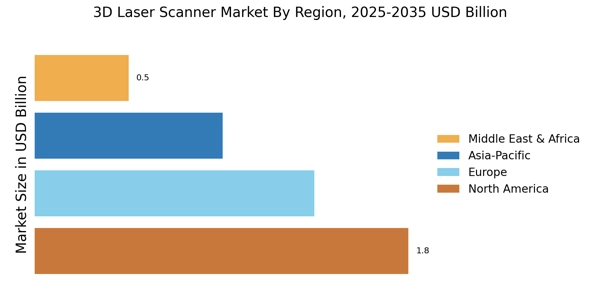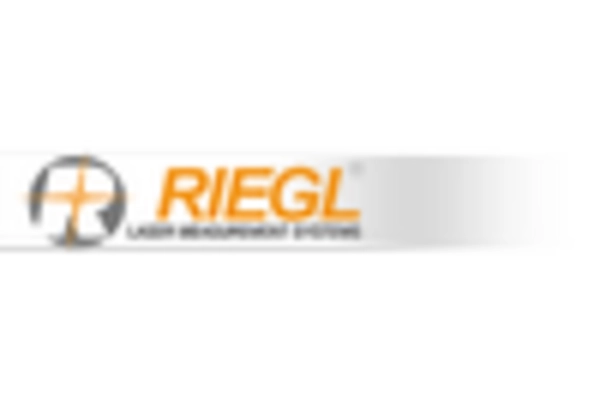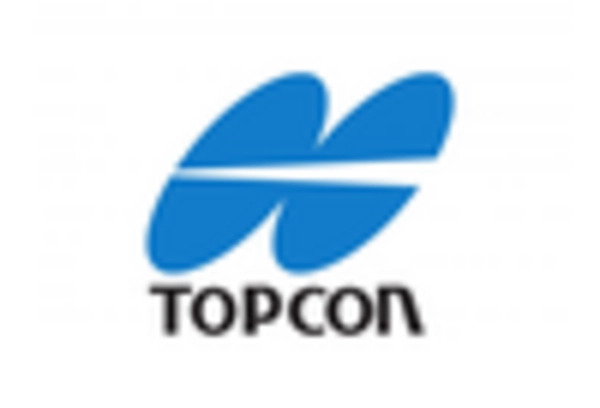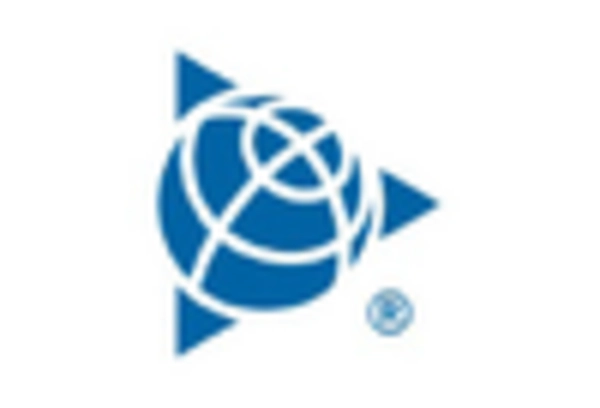Growing Demand in Manufacturing
The manufacturing sector is witnessing a growing demand for 3D laser scanning technology, which is becoming integral to quality control and product development processes. The 3D Laser Scanner Market is benefiting from the need for precise measurements and inspections in manufacturing environments. Companies are increasingly utilizing 3D laser scanners to ensure that components meet stringent quality standards, thereby reducing waste and improving efficiency. Market data indicates that the manufacturing segment is expected to experience a robust growth trajectory, driven by the need for automation and enhanced production capabilities. As manufacturers seek to optimize their operations, the adoption of 3D laser scanning technology is likely to become more prevalent.
Increased Adoption in Construction
The construction sector is a primary driver of the 3D Laser Scanner Market, as the technology is increasingly adopted for its ability to streamline workflows and enhance project accuracy. The use of 3D laser scanning in construction allows for precise measurements, which can reduce errors and rework, ultimately saving time and costs. According to recent data, the construction industry accounts for a substantial portion of the market share, with projections indicating that this segment will continue to expand as more firms recognize the benefits of integrating 3D laser scanning into their processes. The ability to create detailed as-built models and facilitate better communication among stakeholders further underscores the technology's value in construction projects.
Technological Advancements in 3D Laser Scanning
The 3D Laser Scanner Market is experiencing rapid technological advancements that enhance scanning accuracy and efficiency. Innovations such as improved sensor technology and software integration are driving the market forward. For instance, the introduction of high-resolution scanners allows for detailed data capture, which is crucial in various applications, including architecture and engineering. Furthermore, advancements in mobile scanning technology enable users to conduct scans in previously inaccessible areas, thereby expanding the potential applications of 3D laser scanning. As a result, the market is projected to grow significantly, with estimates suggesting a compound annual growth rate of over 15% in the coming years. This growth is indicative of the increasing reliance on precise measurement tools across multiple sectors.
Integration with Building Information Modeling (BIM)
The integration of 3D laser scanning technology with Building Information Modeling (BIM) is a significant driver for the 3D Laser Scanner Market. This synergy enhances the design and construction processes by providing accurate spatial data that can be directly incorporated into BIM systems. The ability to create precise 3D models from laser scans facilitates better planning and collaboration among project stakeholders. As the construction industry increasingly adopts BIM methodologies, the demand for 3D laser scanning is expected to rise correspondingly. Market analysis suggests that this integration could lead to a more streamlined workflow, reducing project timelines and costs. Consequently, the 3D laser scanning market is likely to benefit from this trend as more firms seek to leverage the advantages of combining these technologies.
Emerging Applications in Cultural Heritage Preservation
The 3D Laser Scanner Market is also being propelled by emerging applications in cultural heritage preservation. Institutions and organizations are increasingly utilizing 3D laser scanning to document and preserve historical sites and artifacts. This technology allows for the creation of detailed digital models that can be used for restoration and educational purposes. The growing awareness of the importance of preserving cultural heritage is driving investments in 3D laser scanning projects. Recent initiatives have shown that funding for such projects is on the rise, indicating a potential increase in market demand. As more cultural institutions recognize the benefits of 3D laser scanning, the market is likely to see further expansion in this niche application.

















Leave a Comment